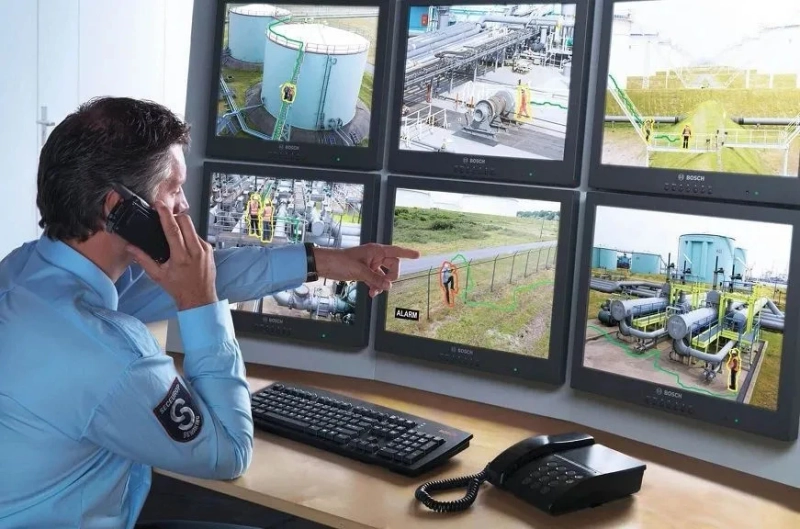In today’s digital age, the threat of eavesdropping has become more pronounced, with sensitive information at risk of being intercepted by malicious actors. Eavesdropping detection services and eavesdropping equipment are essential in identifying and mitigating these threats, ensuring the privacy and security of personal and professional communications. This article explores the importance of eavesdropping detection, the technology involved, and how these services help protect against unauthorized surveillance.
Understanding Eavesdropping and Its Risks:
Eavesdropping involves intercepting private communications without the consent of the parties involved. This can occur through various means, including wiretapping, hidden microphones, and digital interception. The risks associated with eavesdropping are significant, particularly for businesses, government entities, and individuals handling sensitive information. Unauthorized access to confidential conversations can lead to intellectual property theft, financial loss, reputational damage, and compromised personal privacy.
The Role of Eavesdropping Detection Services:
Eavesdropping detection services specialize in identifying and neutralizing surveillance threats. These services employ a range of techniques and tools to detect the presence of eavesdropping equipment, such as hidden microphones, covert cameras, and wiretaps. The primary goal is to uncover and eliminate any devices that might be used to intercept private communications.
Professionals in eavesdropping detection services conduct thorough sweeps of environments where sensitive discussions occur. They utilize advanced detection equipment to scan for electronic signals, unusual RF (radio frequency) transmissions, and other indicators of surveillance devices. Regular sweeps are essential in high-risk environments like corporate boardrooms, government offices, and executive residences to ensure ongoing security and privacy.
Eaves dropping equipment: A Double-Edged Sword
Eaves dropping equipment, while often associated with illicit activities, is also used legitimately by security professionals to detect and neutralize unauthorized surveillance. The same technology that can be used to eavesdrop can also be used to detect eavesdropping. For instance, RF detectors can pick up transmissions from hidden microphones, while spectrum analyzers can identify anomalies in the electromagnetic spectrum that suggest the presence of surveillance devices.
Non-linear junction detectors (NLJDs) are particularly effective in locating electronic components hidden within walls, furniture, or other objects, even if the devices are not actively transmitting. Thermal imaging cameras can detect the heat signatures of electronic devices concealed in rooms. These tools, when used by trained professionals, are critical in uncovering and neutralizing hidden surveillance equipment.
Applications in Corporate Security:
In the corporate world, protecting sensitive information is crucial for maintaining a competitive edge and safeguarding business operations. Eavesdropping detection services are integral to corporate security strategies, particularly for industries like finance, technology, and pharmaceuticals, where intellectual property and confidential data are prime targets for espionage.
Regular eavesdropping sweeps can prevent unauthorized access to proprietary information, trade secrets, and strategic discussions. By identifying and removing eavesdropping equipment, companies can protect themselves from industrial espionage, maintain the confidentiality of their operations, and avoid the financial and reputational damage that can result from information leaks.
Enhancing Personal Privacy:
High-profile individuals, including celebrities, executives, and political figures, are often targets for eavesdropping due to their public visibility and access to sensitive information. For these individuals, maintaining personal privacy is paramount. Eavesdropping detection services provide peace of mind by ensuring that their private spaces, such as homes, vehicles, and offices, are free from surveillance devices.
Personal privacy breaches can lead to significant consequences, including blackmail, identity theft, and loss of personal autonomy. By investing in eavesdropping detection services, individuals can protect their private conversations, secure their personal data, and maintain control over their private lives.
Government and National Security:
Government agencies and national security organizations are prime targets for eavesdropping due to the high value of the information they handle. Protecting classified information and ensuring the confidentiality of diplomatic communications are critical for national security. Eavesdropping detection services play a vital role in these efforts by conducting regular sweeps of government facilities and sensitive locations.
By using advanced eavesdropping detection equipment, security professionals can identify and neutralize surveillance threats posed by foreign entities or other malicious actors. This ensures that government operations remain confidential and that national security is maintained.
The Technology Behind Eavesdropping Detection:
The technology used in eavesdropping detection is sophisticated and continually evolving to keep pace with emerging threats. RF detectors, for example, can scan for a wide range of frequencies, identifying suspicious signals that indicate the presence of listening devices. Spectrum analyzers can analyze the electromagnetic spectrum for unusual patterns that suggest electronic surveillance.
NLJDs are effective in detecting electronic components hidden within objects, making them invaluable for locating covert surveillance devices. Thermal imaging cameras can identify heat signatures of electronic equipment, even when the devices are not in use. These advanced tools, combined with the expertise of trained professionals, are essential for effective eavesdropping detection.
Implementing Comprehensive Security Measures:
To effectively protect against eavesdropping, it is important to implement comprehensive security measures that combine both physical and technical approaches. This includes regular eavesdropping sweeps, secure communication protocols, and physical security measures like access control and surveillance cameras.
Training and awareness are also crucial components of an effective security strategy. Employees and individuals should be educated about the risks of eavesdropping, how to recognize potential threats, and the importance of maintaining security protocols. By fostering a culture of security awareness, organizations and individuals can better protect themselves against unauthorized surveillance.
Conclusion:
In conclusion, eavesdropping detection services and eavesdropping equipment are essential tools in protecting sensitive information and maintaining privacy. As the threat of unauthorized surveillance continues to grow, these services play a critical role in identifying and neutralizing surveillance devices, ensuring the confidentiality of communications. Whether in corporate settings, personal spaces, or government facilities, investing in eavesdropping detection services is a proactive step towards safeguarding privacy and security. By staying vigilant and employing comprehensive security measures, individuals and organizations can protect themselves against the ever-present threat of eavesdropping.



